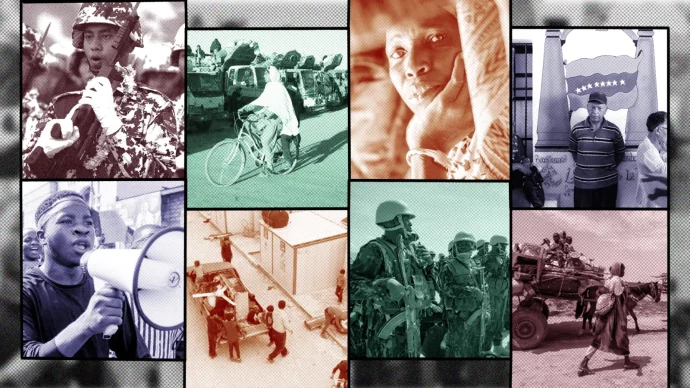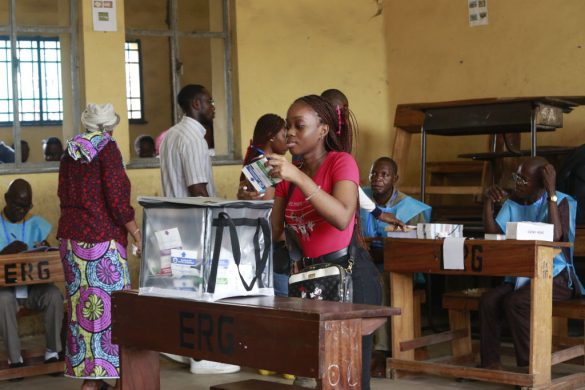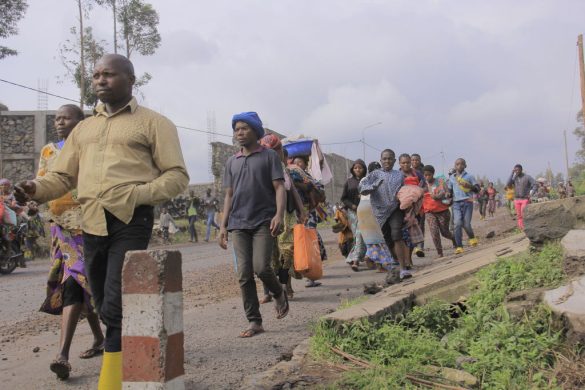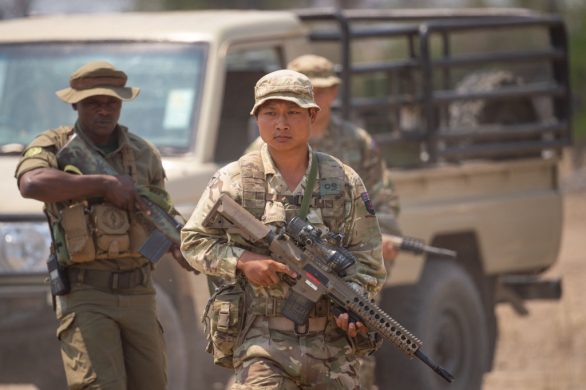En drone fra FN-styrken i DR Congo opdagede i 2014 en færgeulykke på Kivusøen og det lykkedes FN-soldaterne at redde en del af passagerne. Droner er blot en af de værktøjer, som eksperter opfordrer FN’s fredsbevarende styrker at gøre mere brug af.
Teknikere forbereder den første flyvning med en såkaldt ”Unmanned-Unarmed Aerial Vehicles” (UAV) i Goma i DR Congos Nordkivu-provins december 2013. (Foto: MONUSCO/Sylvain Liechti, CC BY-SA 2.0)
NEW YORK, 20 February 2015 (UN News): A group of United Nations experts have urged the Organization’s peacekeeping presence to incorporate technological advances into its operations in order to better confront the dynamic challenges of the 21st century, the UN’s spokesperson’s office said today.
The findings of the five-member Expert Panel on Technology and Innovation, led by peace and security expert Jane Holl Lute, include a number of practical recommendations that call on the UN Departments of Peacekeeping Operations and Field Support to keep pace with innovation and to take full advantage of readily available and existing technologies that are considered essential to success in the field.
“In a rapidly evolving and complex environment, UN peacekeeping must be ready to respond to a vast array of challenges,” Ms. Lute declared in a note to the press issued by the Office of the UN Spokesperson.
Innovation skal gøre styrkerne mere effektive
“Being able to transition to a culture that values innovation is central to being able to execute more effectively on peacekeeping mandates.”
Scattered across vast countries and forbidding territories, UN peacekeeping missions frequently encounter challenges in executing their mandates.
Over the past year, however, the UN has steadily ramped up its use of technology in the field in order to assist its missions with monitoring efforts.
In the Democratic Republic of the Congo (DRC), where unwieldy terrain, dense forests and vast distances can debilitate the UN’s response time to an emergency, the introduction of unmanned aerial vehicles (UAVs) has had an immediate impact.
In one instance last year, a UAV detected a ferry accident in Lake Kivu, in the country’s east, instantly prompting the UN peacekeeping mission in the country to dispatch its speedboats and helicopters to the scene.
The ‘blue helmets’ quick response led to the rescue of 15 people.
FN-styrkerne bør have teknologiske fordele som regeringer
“No advantage should be withheld for those working for peace,” Ms. Lute continued.
“Missions must deploy with at least the same technological advantages that most governments and enterprises around the world now find indispensable to their daily operations.”
The panel’s findings were based on several field visits and interviews with Member States, partner organizations, and partner organizations with similar field operations.
Grøn energi
Along with the critical upgrade of field technology, UN blue helmets are also aiming to ‘go green’ through the responsible use of limited resources, in a bid to leave mission areas in better shape than when they arrived.
Among other steps, GIS data is being used to help find water sources for missions so as not to compete with the local water supply.
Missions are also including waste water treatment plants designed to drastically reduce the need for water and generation of disposable waste, as well as exploring alternative sources of energy such as solar panels.
Download rapporten “Performance Peacekeeping. Final Report of the Expert Panel on Technology and Innovationin UN Peacekeeping” (PDF, 144 sider)















